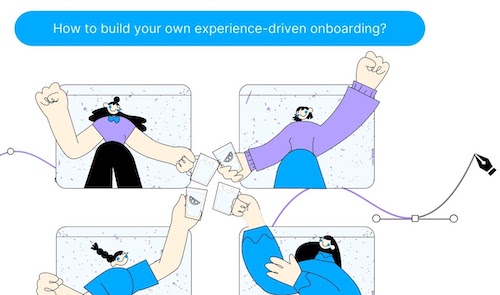First impressions are important. Nearly one in four users will leave an app after using it once. That’s why it’s absolutely essential to provide users with a great onboarding experience to enable them to fulfill their purpose within a digital product.
I always say that onboarding helps us get to know the user (data), and helps the users to get to know the brand or company (value proposition). Thus, a great onboarding strategy allows both parties to improve their relationship.
But, how do I improve the relationship and prevent users from abandoning the process? At the end of the day, an effective onboarding process is a balance between the effort required by users and the value that your product brings. The less effort it takes from them to achieve their goals and get more value, the more likely they are to trust you and become long-term customers.
Let’s now see some UX tips that will help you have a successful onboarding and avoid dropouts. Below I have highlighted some good practices that help me define better onboarding experiences (view) in my day-to-day life.
Wow Effect
First impressions matter, and a lot. Our user’s experience in onboarding will be extrapolated to the rest of the product. For better and for worse. It is the first moment where the user begins to interact with our product. It is scientifically known as the “Halo Effect” and some designers call it the “Wow Effect”.
Halo Effect is a psychological phenomenon found by Edward Thorndike in 1920 that argues that the first impression (either positive or negative) makes us relate it to everything else.
For example, if you have a spelling mistake you will wonder if they have not been able to focus on that mistake, if they will be able to do a good job… They are not related at all but it generates that feeling.
This means that the first impression is really important and designers have to take this into account and always defend it. The “Wow Effect” also works very positively from the opposite side. That is why keeping the “Wow Effect” in mind when defining our onboarding is the first step to making a positive impression and starting to create a good relationship between the two.
Good habits (activation)
It is essential to create good habits from the beginning. With this we intend to generate behavior repeated over time in a systematic way. So, if our product contains an action that we consider to be a core one, or even a “new” core action that hasn’t hit the market yet, onboarding can help you relate to and internalize it from the start. It is a way to activate the user.
Twitter is a good example for that, as from the beginning it encourages you to one of the main actions: “follow”. Twitter encourages new subscribers in their onboarding to follow at least 20 other users with a single click to ensure that they are activated and that they can take full advantage of the product.
On the other hand, Tinder would be a perfect “new” main action reference: it tries to teach the user from the beginning that by systematically swiping to the right and to the left they will be able to advance in their main objective, that is, to be able to view different profiles that are encompassed in the community and connect. We have called this action the “new” main action, since it was a habit not learned in other contexts and that ultimately propelled the brand to success. It is important that every time we innovate in the UX in this way, that we carry out a good onboarding of good habits and learning.

Turbo questions
When a user comes to your app, he has nothing to lose if he leaves. Close and go. He has given us nothing and he has not lost anything either. However, our mission is to make them stay. One very effective way is to ask him small, simple questions that he wants to answer. Firstly, because they will perceive that the product adapts to them; secondly because this way we will get the involved; and thirdly because, in this way, we will be able to obtain data of interest. It’s like installing a “turbo”. With simple questions we encourage you during onboarding. The end result is a listened and propelled user!
In this phase, it is very important to make the questionnaire entertaining.
Show don’t tell
I especially like this example because it is a way of directly showing the user the potential of our product and focusing directly on the value proposition. It is a sample of the real content. When I start to design, I always wonder what the content will look like to its fullest potential, when all the screens are full and their functionalities are active. The reality is that, many times, the user arrives at our product with most of the fields and components empty. In these cases, we use “Show don’t tell”, that is, we show our user how it would work by adding use examples. This content makes it immediately resonate with users and they learn faster.

